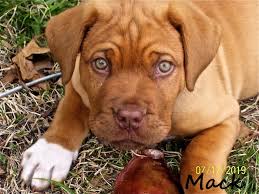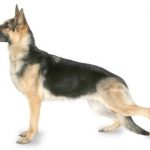The French Mastiff may look like a menacing mass of wrinkles and drooling jowls, but there’s far more to this dog than meets the eye. In fact, owners describe these dogs as real sweethearts. That doesn’t mean they’re pushovers, though. They are extremely loyal to their people, and they’ll do their best to protect them from danger. Even so, the hallmark of this breed is their calm and dependable nature. That’s definitely a quality you want in such a powerful canine.
French Mastiff
The French Mastiff may look like a menacing mass of wrinkles and drooling jowls, but there’s far more to this dog than meets the eye. In fact, owners describe these dogs as real sweethearts. That doesn’t mean they’re pushovers, though. They are extremely loyal to their people, and they’ll do their best to protect them from danger. Even so, the hallmark of this breed is their calm and dependable nature. That’s definitely a quality you want in such a powerful canine.
French Mastiff Characteristics
Appearance
The French Mastiff, also known as the Dogue de Bordeaux, looks quite intimidating, and he really can be if circumstances call for it. These dogs have a rectangular appearance with deep chests that extend down half of their height. They have fairly thick tails that taper to a point and stretch down to the back of their hocks. Their build is stocky and powerful and their skin is thick, loose and folded in wrinkles, most notably around the face, head and neck areas.
Males:
- Weight – Minimum of 110 pounds
- Height – 23.5 to 27 inches at the shoulder
Females:
- Weight – Minimum of 99 pounds
- Height – 23 to 26 inches at the shoulder
This breed’s head is the most impressive part of the package. The ideal head is massive and equipped with a broad nose and strong jaws. The muzzle is approximately one third the length of the head, and there is a definite stop where it meets the dog’s forehead. The bite is undershot, which means the lower teeth are set in front of the upper teeth when the jaw is closed. Loose jowls drape down from the muzzle and cause these dogs to drool. The eyes are oval-shaped and wide-set. Their skin is fairly loose and quite thick with significant wrinkles on the head, face and neck. The ears are relatively short and hang downward.
The French Mastiff’s coat is short and surprisingly soft for such a large dog, and it ranges in color from light fawn to red fawn. These dogs may carry either a black or brown mask or sometimes no mask at all, but the mask should be limited to the muzzle and eye areas and not spread up into the head. The color of the nose should match the mask.






